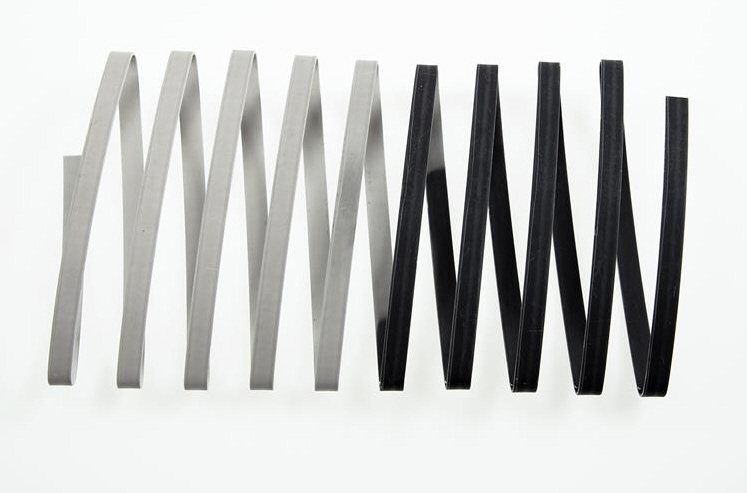The reasn is because minute dimensions can still have major effects - nanoparticles have an especially large surface-area-to-volume ratio, making them them extremely efficient and reactive. Researchers of the Fraunhofer Institute for Chemical Technology ICT in Pfinztal near Karlsruhe are utilizing this characteristic to create novel coatings and incorporating active nano-materials into polymer systems. These coatings can be applied easily like paint or varnish.

Metal strip coated with thermochromic nanoparticles. At temperatures above 30° Celsius (about 86 °F), the coating is transparent and the metal underneath reflects heat. © Fraunhofer ICT
“However, the special properties of nano-composites only become apparent if the particles do not clump so that an agglomeration is avoided,” explains Helmut Schmid from Fraunhofer ICT, who helped develop a process through which the nanoparticles are distributed uniformly in the polymer matrix. “In addition, integrating the nanoparticles in the plastic system provides extra safety. The binding forces prevent the uncontrolled release of individual nanoparticles. We can prove this using analytical techniques able to detect extremely small concentrations of substances.”
They developed thermochromic coatings during the project that change color depending on their temperature. The coatings thereby either absorb heat or become transparent and permit its reflection .
“Metal strips possess very special properties when coated in this way. If temperatures are below 30 °Celsius (about 86 °F), the black coating absorbs heat. If it is warmer, the color changes. The varnish, which has now become transparent, allows the infrared radiation to be reflected,” Schmid explains. Strip and wire coated like this are useful in architectural applications. They can be interwoven and used as exterior self-regulating thermal cladding for walls and façades to help cool buildings passively and thereby reduce operating costs.
The researchers are continuing to work on additional nano-systems such as coatings with luminescent properties.





Comments